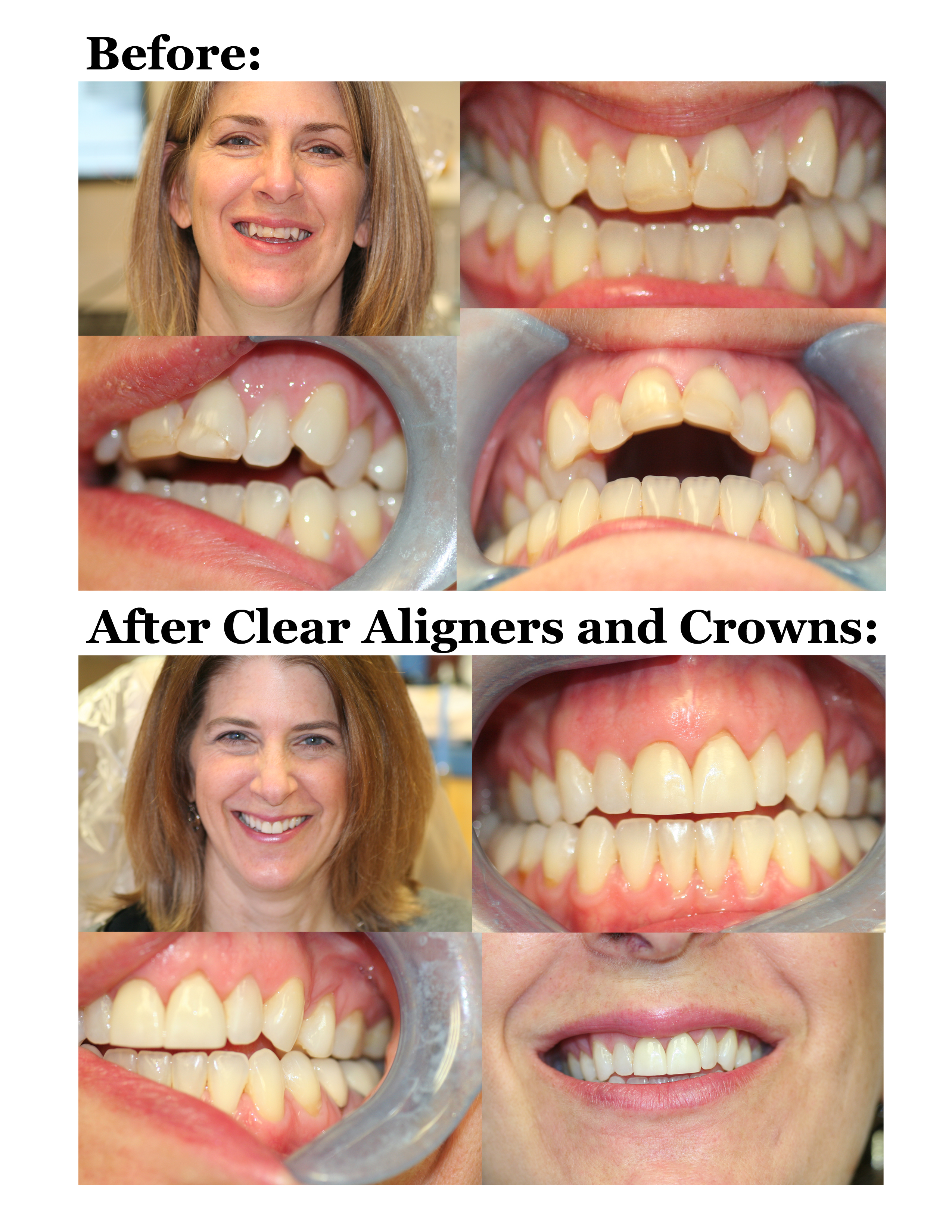
Wednesday, May 14, 2014
When we started this case, the patient came to me stating unequivocally she was not interested in jaw surgery (orthognathic surgery), but she wanted to improve the look of her smile. I explained that if she was willing to do the work that together we could improve her esthetics and her function as well; conceptually, I think of this as functional esthetics. In 2011, she could bite down and stick her entire pinky in her mouth with her teeth closed completely together. Based on the narrow archform and relative jump between her posterior teeth and her anterior teeth in the maxillary arch, we decided the only way to achieve substantial and meaningful closure of her overjet (the space her pinky could fit through without dragging on her teeth) was to remove 2 teeth, so we removed her 1st premolars on the upper right and the upper left. This created the necessary space we needed.
To take advantage of this space, we moved the teeth with clear aligner therapy using Invisalign. We also attached buttons to her mandibular first molars and her maxillary canines. She faithfully wore her elastics to help encourage the movement of these teeth. It was not by magic that we achieved this movement, but instead by daily dedication of my patient to continue with the ongoing 22 hours per day wearing of her aligners, and additionally wearing her elastics. Week after week, then, month after month, little by little, we carefully moved her teeth to close the space between her upper and lower arch. One day along our journey, we were looking at the progress we had been making and she informed me that she bit lettuce, which was one of our bell weather goals. Later she told me that she bit a sandwich. Once she started being able to chew with her front teeth, the idea of truly life-changing therapy really started to set in.
I knew from the outset that this would be a fun case because it would be challenging. I was excited to work on this case. I feel a great sense of accomplishment knowing that what we did here really made a difference. By the end of treatment, it wasn’t just the teeth that had changed.
The last piece of the puzzle was to replace some old bonding that was looking old and starting to fail. The old composite had been placed to repair the teeth after an injury, which is very common on teeth that are overjet. This composite had been bonded to her teeth over 10 years ago, no longer matched her teeth, and was very stained and falling off. So, we repaired these teeth using all-ceramic crowns that will act as a lasting solution to restore where they were previously fractured. My patient enjoys smiling now. I think the before and after pictures really tell the story.
Wednesday, May 14, 2014

